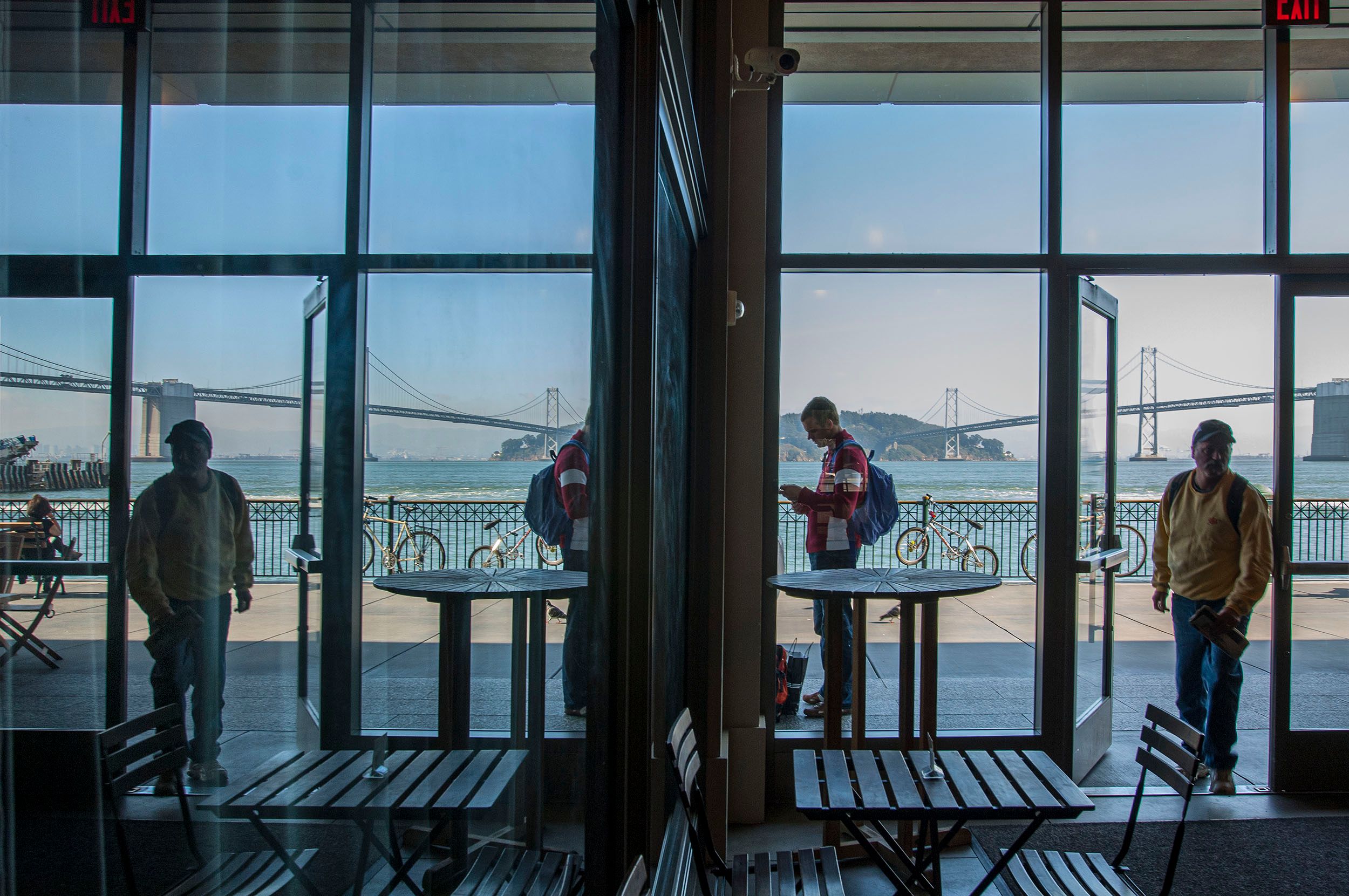Reflections off a mirror in a store in San Francisco overlooking San Francisco Bay and the San Mateo Haywood Bridge. CA.
When I travel working on assignments for client projects, I almost always try to create some personal time to explore where I am. I start studying a city by searches on the internet aligned with my interests in locations of museums, architecture, financial districts, churches, cemeteries, restaurants and other recommended places to see. By mapping out these areas of interest coordinated with segments of the area and then matching it with when the sunlight might be most opportune. The last part is very tricky because many times its in light that you least suspect would yield interesting photographs is where I find great or at least interesting opportunities. I get up at dawn, quickly get dressed, grab my Nikon D810 and bag with at most, 3 lenses, 2 batteries, plenty of memory cards, a bottle of water, and a few protein bars. The sun waits for nobody and my time is limited. I walk for miles every day slowly walking the streets, peeking around alleys and corners, checking out harbors, cemeteries, and towers, following the light while looking for subject matter and interesting POVs. As long as I am running photographs through the camera, I am pretty much assured of coming away with something from a day of wandering. I break it down this way: If I end up with 1 incredible photograph over the course of 3 days of shooting then over a lifetime, I could end up having 100 incredible images to show and sell. More would be nice, less would be agonizing. Think about some of your favorite photographers and how many images did they produce in their lifetimes and how many of their images you love? Most likely, you can count them on both hands, a few maybe more.
The trick is the best shots aren't easily discernible. They would exist and be recognized only much later: months, sometimes years to be rediscovered in the re-editing process. Photographs that I thought would be a great turn out to be even greater disappointments and failures. Images that I might have only made 1 or 2 exposures have turned out to be my best images.
How does that happen? I wonder too. Maybe my brain was thinking too much and I wasn't looking clearly. There are many moments, actually hours of talking to myself, while spending too much time alone, wondering what I am doing and why? On the other hand, if you wait to see the image before you press the shutter, the moment is gone. Mostly all genre photographers have to be intuitive and hopeful about what they perceive might happen next and need to be in position and shooting. I refer to this as working a situation. It might be only 10 seconds, might be a few minutes of waiting around, and seeing what is developing with the various moving and stationary components of a shot ( light, people, objects, buildings). Life moves at a very fast pace and while I am trying to make sense of the discordant pieces, much of it in motion, going in different directions, it's very difficult to know what you have on the memory cards. Definitely a lot more failures than successes. Easier to do using a digital camera because at the very least, I am not running film and processing costs to pay the admission to simply see the images.
Every now and then I make an image that is more than the sum of the parts. A part of my brain was actively seeing that and I was simply trying my best to keep up with the commotion and make an image worthy of my hopes and short time on the planet.

